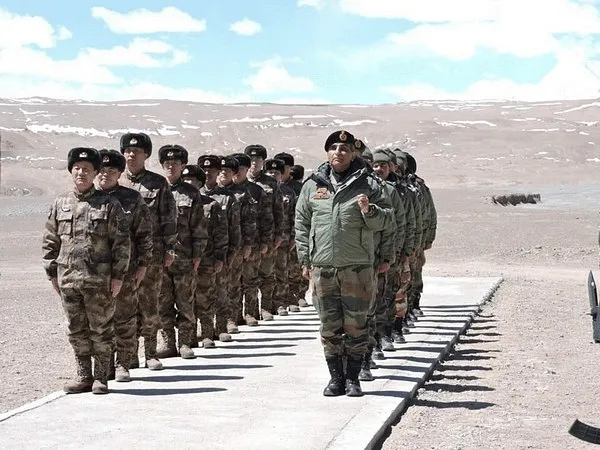New Delhi: In a significant development, India and China convened the 27th Meeting of the Working Mechanism for Consultation and Coordination on India-China Border Affairs (WMCC) in New Delhi on Wednesday.
The in-person meeting, led by the Joint Secretary (East Asia) from the Ministry of External Affairs and the Director General of the Boundary and Oceanic Affairs Department of the Chinese Ministry of Foreign Affairs, aimed to address the ongoing border issues between the two nations.
During the meeting, the two delegations engaged in a frank and open discussion, reviewing the situation along the Line of Actual Control (LAC) in the Western Sector of the India-China border.
They also explored proposals for disengagement in the remaining areas, with the goal of restoring peace and tranquillity in the region, thereby fostering an environment conducive to normalising bilateral relations.
Both sides also agreed to schedule the next round of Senior Commander’s meetings at an early date. Additionally, they expressed their commitment to continue dialogue and consultations through military and diplomatic channels.
However, in a separate development, China levelled accusations against India, alleging “unfair and discriminatory treatment” of Chinese journalists and threatening to take “appropriate countermeasures” in response. According to a report by The Wall Street Journal (WSJ), both countries have recently expelled almost all of each other’s journalists, causing further strain in their relations.
The Wall Street Journal (WSJ) report highlights that New Delhi declined to renew visas for the only two remaining Chinese state media journalists in India this month. On the other hand, at least two out of the four Indian journalists stationed in China have been denied visa renewals, and another journalist had his accreditation revoked.
Speaking at a press conference, Chinese Foreign Ministry Spokesperson Mao Ning criticized India’s treatment of Chinese journalists, citing the reduction in visa validity periods without a valid reason since 2017.
China’s official mouthpiece, Global Times newspaper, echoed similar sentiments, noting that India had been denying long-term stay applications for Chinese journalists since 2020.
In response to what she called “prolonged and unreasonable suppression” by India, Mao stated that China had taken appropriate countermeasures to safeguard the legitimate rights and interests of Chinese media. She further mentioned that the visa of the last remaining Chinese journalist in India had also expired.
Mao emphasized that a return to normalcy in the relationship would depend on whether India could provide the same convenience and assistance to Chinese journalists as China does to Indian journalists in Beijing. Indian officials have yet to comment on the issue, although earlier reports indicated that China had frozen the visas of two Indian journalists.
These recent developments regarding journalist expulsions pose an additional challenge to the already complex India-China relationship. The issue adds another layer of contention, casting a shadow over efforts to address the border dispute and underscoring the need for both countries to address underlying concerns and work towards building mutual trust and understanding.
The deteriorating relationship between India and China has been ongoing, with a lingering border standoff in eastern Ladakh for three years. The situation worsened significantly after the deadly clash in Galwan Valley in June 2020.
India currently holds the chairmanship of the G20 and has been organizing meetings in preparation for the upcoming summit in New Delhi in September. Notably, China has skipped G20 meetings held in Ladakh and Kashmir in the past two months. India also holds the chairmanship of the Shanghai Cooperation Organization this year.
This visa dispute is not the first time China has engaged in a tit-for-tat spat over journalist visas. In 2020, Beijing expelled several U.S. journalists in response to Washington’s restrictions on Chinese state media reporters in the United States.







